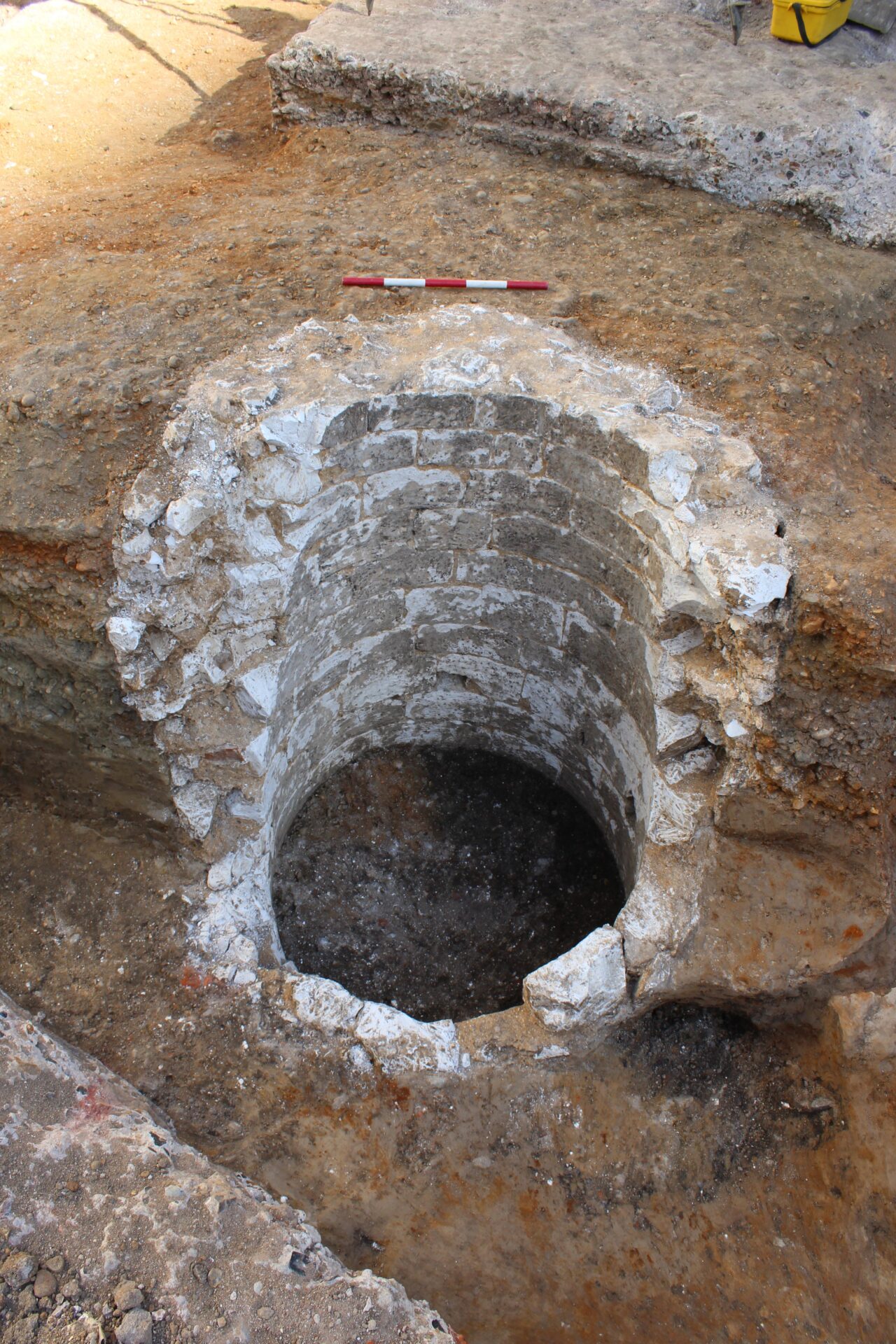A substantial quantity of decorative plaster was recovered from the backfill of a late medieval chalk lined well (below). Three repeated moulded elements were present including bosses, with what appears to be egg-and-dart detailing, acanthus leaves and deep moulded ribs, all probably from a single collapsed or demolished ceiling. It is difficult to determine how each of the fragmentary elements relate to one another, although they probably take the form of some form of geometrical pattern or ‘fretwork’. Ornate plasterwork emerged as the dominant form of ceiling decoration in the Elizabethan and Jacobean period, with the combination of enriched ribs, motifs from moulds, pendants and bosses becoming particularly fashionable during the early 17th century. The egg-and-dart motif is a classical revival, popularised by Inigo Jones in his less elaborate schemes post-dating c. 1620, although it was probably present in earlier pattern books and thus could be earlier.
Decorative plasterwork was not limited to Royal or aristocratic residences but emulated in other establishments, including the Livery Company Halls of London, symbolising the wealth and prestige of their members. Although now gone, contemporary schemes are known to have existed at the nearby Fishmongers Hall, and also at those of the Leathersellers, Goldsmiths and Plasterers. Pottery and clay tobacco pipe from the same well suggest the plaster ceiling was pulled down sometime during the middle decades of the 18th century. Notably the Ironmongers Hall was rebuilt more than once during its life at Fenchurch Street, first in c. 1587 and then again in c. 1745. The plaster may well derive from an ornate ceiling gracing the late 16th-century hall, either original to the building or representing a 17th-century addition and demolished during the mid-18th century to make way for the new hall. Notably, the Livery Company Hall Wardens’ Accounts from 1540-1591 make no mention of any decorative plaster work, so it is perhaps unlikely the ceiling was part of the 1587 build, but rather a later upgrading of the hall’s interior decoration, perhaps dating to the early 17th century.



